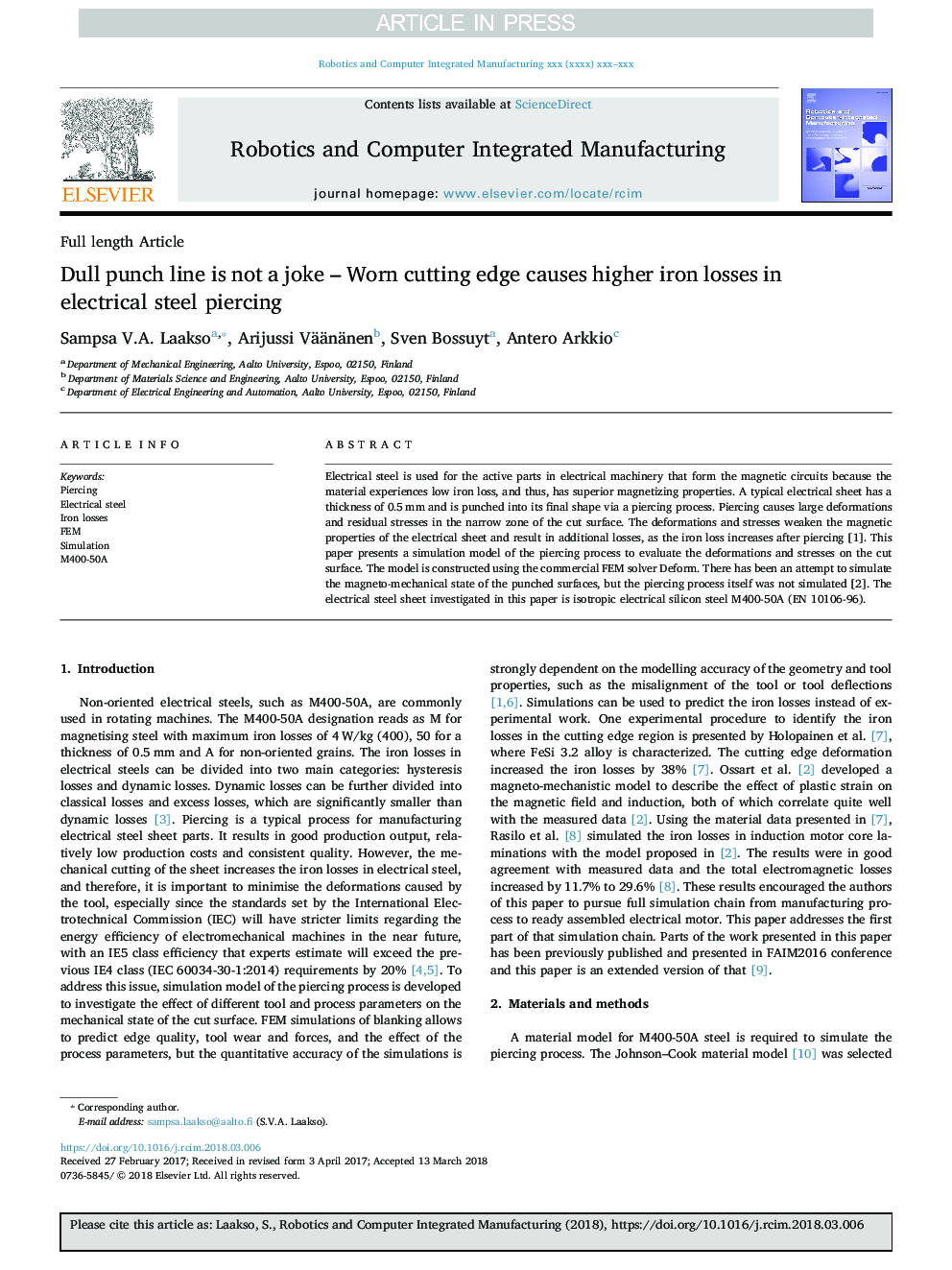| Article ID | Journal | Published Year | Pages | File Type |
|---|---|---|---|---|
| 11505976 | Robotics and Computer-Integrated Manufacturing | 2019 | 6 Pages |
Abstract
Electrical steel is used for the active parts in electrical machinery that form the magnetic circuits because the material experiences low iron loss, and thus, has superior magnetizing properties. A typical electrical sheet has a thickness of 0.5â¯mm and is punched into its final shape via a piercing process. Piercing causes large deformations and residual stresses in the narrow zone of the cut surface. The deformations and stresses weaken the magnetic properties of the electrical sheet and result in additional losses, as the iron loss increases after piercing [1]. This paper presents a simulation model of the piercing process to evaluate the deformations and stresses on the cut surface. The model is constructed using the commercial FEM solver Deform. There has been an attempt to simulate the magneto-mechanical state of the punched surfaces, but the piercing process itself was not simulated [2]. The electrical steel sheet investigated in this paper is isotropic electrical silicon steel M400-50A (EN 10106-96).
Related Topics
Physical Sciences and Engineering
Computer Science
Artificial Intelligence
Authors
Sampsa V.A. Laakso, Arijussi Väänänen, Sven Bossuyt, Antero Arkkio,
